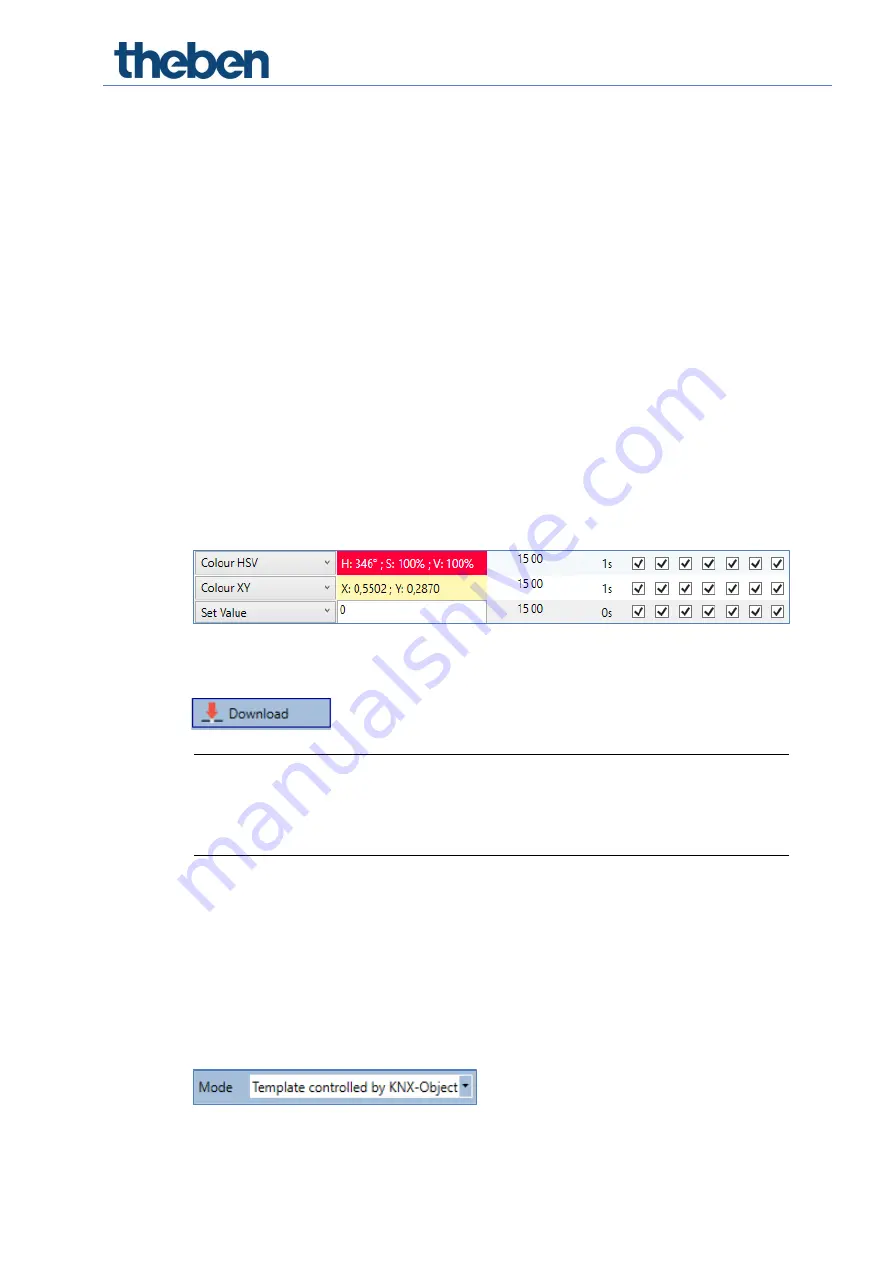
Time control
Manual DALI gateway S64 KNX/S128 KNX
82
Colour HSV
This function sets the colour values of DT-8 devices that support the primary colours RGB.
In this case, however, the value is entered by means of saturation, hue and brightness levels.
On the ECG the colour is also changed if the light is turned off at the time of the action.
The permitted value range for the hue is between 0 and 360°, the value range for saturation
and brightness is between 0 and 100 %.
Max OnValue
This function sets the maximum switch-on value of the selected groups or ECGs. When this
action is used, any maximum switch-on value set in the ETS parameters is overwritten. The
permissible value range is 0 - 100 %. This value is reset to the ETS setting after an ETS
download.
In principle, every group can be added to a template independently of the device types used in
the group. Whilst the functions “Set Value“, “MinValue“ and “MaxValue“ work for all device types,
(including, for example, fluorescent lights DT-0 and LED modules DT-6), the colour control
functions „“Colour Temperature“, “Colour XY“, “Colour RGBW“, “Colour RGB“ and “Colour HSV“
can, of course, only be executed by the connected DT-8 devices. Other device types will ignore
these actions. This also applies to the selected method. A DT-8 device with XY control, for
example, will ignore an RGBW action and vice versa.
If the DT-8 devices within a group or template use different methods but you want them all to
perform a colour change at the same time, you need to set up two actions with different
functions for the same point in time:
Once an action table within a template is complete, you need to save the template onto the DALI
gateway. Please press the download button to do so.
Please remember that time-dependent actions can only be performed if they have pre-
viously been saved on the gateway. You can, however, test individual actions via the test
button without saving them on the gateway. This does not change the data on the
device.
13.3
Disabling/enabling
A template can be enabled or disabled in the header of the editor.
This makes it possible to fully prepare a template whilst disabling its execution. This way you
can, for ex-ample, create two templates: one for a building in normal mode and one for the
holiday period. You can now simply enable the required template without having to modify any
of the actions. It is even easier to control time-dependencies externally via external objects. If
you select this setting for a template, you can control it via the external objects 23ff.
The value on receipt of the object determines whether a template is disabled or enabled.







































